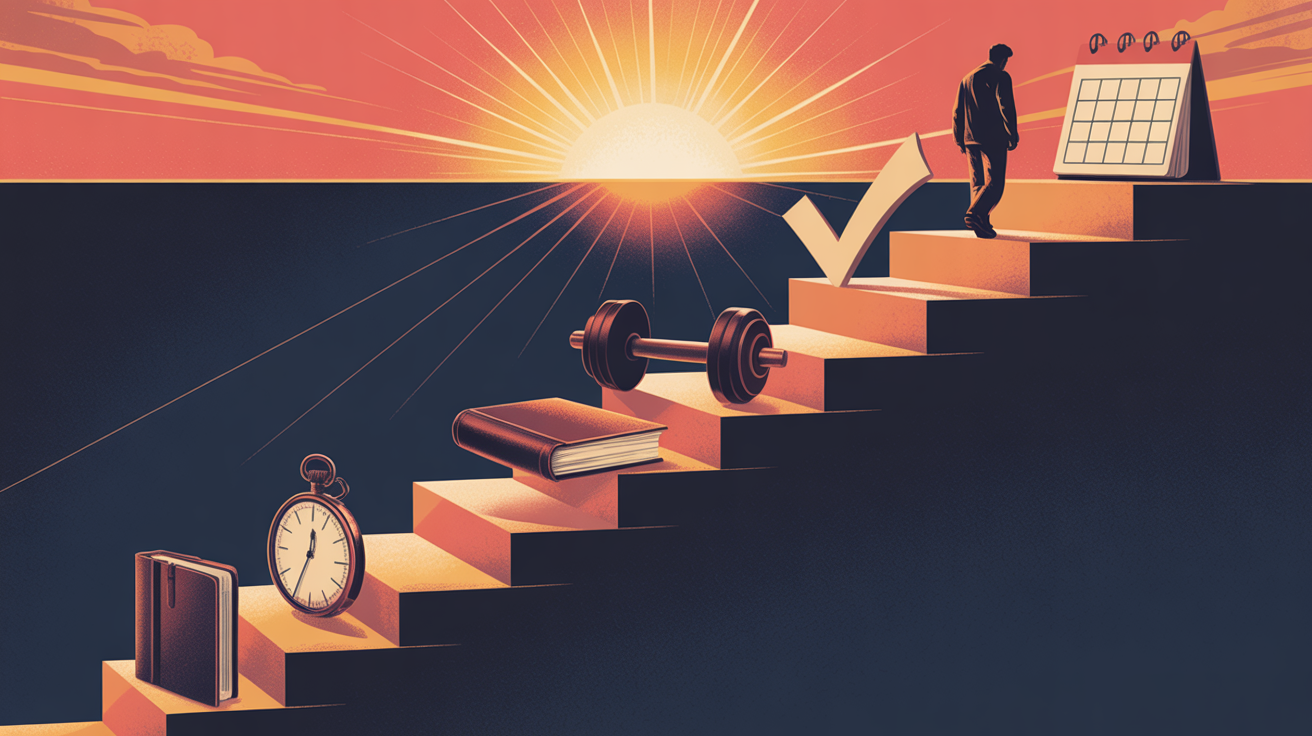
The Ultimate Guide to Self-Discovery: Best Tools & Resources
What if I told you that 73% of people don’t truly know who they are beneath their conditioned responses?
You’re scrolling through social media at 2 AM again, comparing your inner world to everyone else’s highlight reel. That familiar knot in your stomach tightens as you wonder: “Who am I really, underneath it all?”
If you’re tired of people-pleasing, second-guessing every decision, and feeling like you’re living someone else’s life, you’re not alone. The journey of self-discovery isn’t just trendy wellness talk—it’s the foundation for everything you want: authentic relationships, aligned career choices, and that elusive sense of inner calm.
This guide reveals the most effective tools and resources for deep self-discovery, from beginner-friendly practices to advanced frameworks that create lasting transformation. You’ll learn exactly how to peel back the layers of conditioning, heal old wounds, and finally trust yourself.
Ready to meet the real you?
Table of Contents
- 🧭 Why Traditional Self-Help Falls Short
- 🔬 The Science Behind Effective Self-Discovery
- 📝 Essential Journaling Tools for Deep Inner Work
- 🌟 Personality & Design Systems That Actually Work
- 🌑 Shadow Work: Meeting Your Hidden Self
- 💆♀️ Nervous System & Body-Based Practices
- 📚 Books & Courses for Transformation
- 🎯 Creating Your Personal Self-Discovery Action Plan
🧭 Why Traditional Self-Help Falls Short
Most self-discovery approaches scratch the surface because they focus on symptoms, not root causes.
The Problem with Generic Advice
Traditional self-help tells you to “think positive” or “just be confident”—but these band-aid solutions ignore your unique wiring. Your nervous system, attachment style, and unconscious patterns all influence how you show up in the world.
The real issue? You’re trying to change behaviors without understanding the deeper programming that creates them.
What Actually Works
Effective self-discovery requires:
- Personalized frameworks that account for your unique blueprint
- Somatic practices that work with your body’s wisdom
- Shadow integration to heal what you’ve been avoiding
- Nervous system regulation to create sustainable changes
Pro tip: Stop trying to “fix” yourself. You’re not broken—you’re just operating from outdated programming.
The most successful people I work with combine multiple modalities rather than relying on one approach. This multi-layered strategy addresses both conscious and unconscious patterns.
🔬 The Science Behind Effective Self-Discovery
Understanding the neuroscience behind self-discovery helps you choose tools that create lasting change.
Your Brain on Self-Discovery
Research from Harvard Medical School shows that self-reflection activates the medial prefrontal cortex—the same region associated with emotional regulation and decision-making. But here’s the catch: you need the right kind of self-reflection.
Surface-level thinking keeps you stuck in familiar neural pathways. Deep introspection literally rewires your brain through neuroplasticity.
The Body-Mind Connection
Your body stores emotional memories that your conscious mind can’t access. This is why purely cognitive approaches often fail—you’re missing 80% of the information.
Key insight: Trauma and conditioning live in your nervous system, not just your thoughts.
Evidence-Based Approaches
Studies from Stanford University reveal that the most effective self-discovery practices combine:
- Cognitive reflection (journaling, questioning)
- Somatic awareness (breathwork, movement)
- Integration practices (meditation, therapy)
This tri-fold approach addresses the whole person, not just the thinking mind.
📝 Essential Journaling Tools for Deep Inner Work
Journaling is the gateway drug to self-discovery—but not all journaling is created equal.
The 5-Minute Morning Pages
Start with Julia Cameron’s Morning Pages practice from “The Artist’s Way.” Write three pages of stream-of-consciousness thoughts every morning.
Why it works: This practice bypasses your inner critic and accesses subconscious material.
Best tools:
- 750words.com – Digital version with tracking
- Moleskine Classic Notebook – For analog lovers
- Day One Journal App – With mood tracking features
Shadow Work Prompts
These deeper questions reveal hidden aspects of your personality:
- What traits do I judge harshest in others?
- When do I feel most ashamed or embarrassed?
- What would I do if I knew no one was watching?
- What parts of myself do I hide from others?
Pro tip: Set a timer for 10 minutes per prompt. Your most honest insights come when you don’t have time to self-edit.
The Inner Child Dialogue
Write conversations between your adult self and your inner child. This practice heals developmental wounds that create adult patterns.
Recommended resource: Dr. Nicole LePera’s “How to Do the Work” workbook provides structured inner child exercises.
Digital vs. Analog Journaling
Digital benefits: Searchable, portable, can’t lose it Analog benefits: Slower processing, tactile connection, no distractions
My recommendation: Use both. Morning pages digitally for speed, shadow work by hand for depth.
🌟 Personality & Design Systems That Actually Work
Move beyond basic personality tests to systems that reveal your authentic blueprint.
Human Design: Your Energetic Blueprint
Human Design combines astrology, I Ching, Kabbalah, and quantum physics to reveal your unique energetic signature.
Unlike generic personality tests, Human Design shows you:
- How you’re designed to make decisions
- Your natural energy patterns
- Where you’re susceptible to conditioning
- Your authentic way of being in relationships
Best resources:
- Jovian Archive – Official Human Design website
- MyBodyGraph.com – Free chart generation
- “Human Design” by Chetan Parkyn – Beginner-friendly book
Pro tip: Focus on your Strategy and Authority first. These two elements alone will transform how you navigate life.
Enneagram: Understanding Your Core Motivations
The Enneagram reveals the unconscious motivations driving your behavior. Unlike other systems, it shows you both your gifts and your blind spots.
Key insight: Your Enneagram type isn’t who you are—it’s the box you’ve been living in.
Best resources:
- The Enneagram Institute – Official typing assessments
- “The Wisdom of the Enneagram” by Don Richard Riso – Comprehensive guide
- EnneaApp – Daily insights and exercises
Gene Keys: From Limitation to Gift
The Gene Keys system, created by Richard Rudd, maps your journey from unconscious patterns (Shadow) to conscious gifts (Gift) to transcendent purpose (Siddhi).
This system is particularly powerful for understanding:
- Why you get triggered in specific situations
- How to transform your deepest wounds into wisdom
- Your unique contribution to the world
Essential resource: “The Gene Keys” by Richard Rudd – The foundational text
Choosing Your System
Don’t try to master all systems at once. Start with the one that most resonates:
- Logical/structured thinkers: Human Design
- Emotionally-focused people: Enneagram
- Spiritually-oriented individuals: Gene Keys
🌑 Shadow Work: Meeting Your Hidden Self
Your shadow contains everything you’ve disowned about yourself—both negative traits and hidden gifts.
What Is Shadow Work?
Shadow work is the practice of integrating rejected aspects of your personality. Carl Jung, who coined the term, believed that what we resist in others reflects what we’ve repressed in ourselves.
Common shadow elements:
- Anger (especially for people-pleasers)
- Selfishness (for chronic givers)
- Vulnerability (for perfectionists)
- Power (for those who play small)
The Mirror Technique
Pay attention to your strong reactions to others. These reactions are maps to your shadow.
Exercise: Write about someone who really triggers you. List their annoying traits, then ask: “How might I also have this quality?”
Pro tip: The traits you judge most harshly in others are often your disowned gifts in distorted form.
Shadow Work Resources
Books:
- “Meeting the Shadow” edited by Connie Zweig – Comprehensive anthology
- “Owning Your Own Shadow” by Robert Johnson – Accessible introduction
Online courses:
- Teal Swan’s Shadow Work course – Structured video series
- Caroline Myss’s Sacred Contracts Online – Advanced shadow integration
Apps:
- Shadowpath – Daily shadow work prompts
- Inner Journey – Guided shadow meditation
Integration Practices
Shadow work isn’t just about identifying your shadow—you must integrate it:
- Acknowledge the shadow aspect without judgment
- Express it in healthy ways (art, movement, journaling)
- Integrate its gifts while managing its destructive potential
Warning: Shadow work can bring up intense emotions. Consider working with a qualified therapist for deeper traumas.
💆♀️ Nervous System & Body-Based Practices
Your nervous system holds the key to sustainable transformation. You can’t think your way out of dysregulation.
Understanding Your Nervous System States
Dr. Stephen Porges’ Polyvagal Theory identifies three primary states:
- Ventral Vagal (Safe & Social): Calm, connected, creative
- Sympathetic (Fight/Flight): Anxious, reactive, hypervigilant
- Dorsal Vagal (Freeze/Shutdown): Numb, depressed, disconnected
Self-discovery insight: Your authentic self can only emerge from a regulated nervous system.
Somatic Experiencing
Somatic Experiencing helps you release trapped trauma from your body. Unlike talk therapy, it works directly with your nervous system.
Best resources:
- “Waking the Tiger” by Peter Levine – Foundational text
- Somatic Experiencing International – Find certified practitioners
- NARM Institute – NeuroAffective Relational Model training
Breathwork for Self-Discovery
Conscious breathing bypasses mental defenses and accesses emotional material stored in your body.
Recommended practices:
- Wim Hof Method – Cold exposure and breathing for resilience
- Transformational Breath – Full-body breathing for emotional release
- 4-7-8 Breathing – Simple technique for nervous system regulation
Apps:
- Breathe (iOS) – Guided breathing exercises
- Insight Timer – Free breathwork meditations
- Othership – Community-based breathwork sessions
Movement Practices
Your body holds wisdom that your mind can’t access. Movement practices help you:
- Release stored emotions
- Develop body awareness
- Connect with your authentic expression
Recommended modalities:
- 5Rhythms – Expressive movement meditation
- Authentic Movement – Improvisational movement practice
- Yoga – Particularly Yin or Restorative styles
- Dance/Movement Therapy – With certified practitioners
Pro tip: You don’t need to be “good” at movement. The goal is feeling, not performing.
📚 Books & Courses for Transformation
The right resources can accelerate your self-discovery journey significantly.
Essential Books
For Beginners:
- “You Are a Badass” by Jen Sincero – Fun, accessible introduction
- “The Gifts of Imperfection” by Brené Brown – Shame resilience and authenticity
- “Untamed” by Glennon Doyle – Breaking free from conditioning
For Intermediate Seekers:
- “The Body Keeps the Score” by Bessel van der Kolk – Trauma and healing
- “The Power of Now” by Eckhart Tolle – Present moment awareness
- “Women Who Run With the Wolves” by Clarissa Pinkola Estés – Archetypal psychology
For Advanced Practitioners:
- “The Myth of Normal” by Gabor Maté – Trauma, illness, and healing
- “Integral Ecology” by Sean Esbjörn-Hargens – Comprehensive developmental framework
- “A New Earth” by Eckhart Tolle – Ego transcendence
Online Courses & Programs
Mindvalley University offers comprehensive personal development curricula including:
- “Be Extraordinary” by Vishen Lakhiani
- “The Silva Method” for intuition development
- “WildFit” by Eric Edmeades for relationship with food/body
The Shift Network provides in-depth courses on:
- Shadow work with various teachers
- Breathwork certification programs
- Somatic healing modalities
Sounds True offers both courses and audiobooks from leading teachers:
- Tara Brach’s “Radical Acceptance” course
- Rick Hanson’s “Positive Neuroplasticity Training”
- Peter Levine’s somatic experiencing courses
Audiobooks vs. Print vs. Digital
Audiobooks: Great for commuting, multitasking Print books: Better retention, tactile experience Digital: Searchable, portable, often cheaper
Pro tip: Use different formats for different purposes. Audiobooks for inspiration, print for deep study, digital for reference.
Creating a Learning Schedule
Don’t try to consume everything at once. Create a sustainable learning rhythm:
- One foundational book per month
- One online course per quarter
- Daily practice from current material
🎯 Creating Your Personal Self-Discovery Action Plan
Self-discovery without action remains intellectual entertainment. Here’s how to create lasting transformation.
Phase 1: Foundation (Months 1-3)
Week 1-2: Assessment
- Take Human Design, Enneagram, or Gene Keys assessment
- Start daily morning pages
- Begin basic breathwork practice (5 minutes daily)
Week 3-12: Building Habits
- Continue journaling practice
- Add one shadow work prompt weekly
- Introduce movement practice
- Read one foundational book
Key milestone: Consistent daily practices established
Phase 2: Deep Dive (Months 4-9)
Focus areas:
- Shadow work – Weekly focused sessions
- Body work – Regular somatic practices
- Integration – Apply insights to daily life
- Community – Find like-minded practitioners
Key milestone: Major pattern shifts and increased self-awareness
Phase 3: Integration & Mastery (Months 10+)
Advanced practices:
- Mentorship – Work with qualified practitioners
- Service – Share your gifts with others
- Refinement – Deepen existing practices rather than adding new ones
Key milestone: Living from authentic self rather than conditioned patterns
Common Mistakes to Avoid
- Information addiction – Reading about self-discovery instead of practicing it
- Spiritual bypassing – Using practices to avoid difficult emotions
- Perfectionism – Expecting linear progress
- Isolation – Trying to do everything alone
- Impatience – Expecting instant transformation
Measuring Progress
Track your growth through:
- Self-awareness increases – Catching patterns faster
- Emotional regulation improves – Less reactivity
- Decision-making clarity – Trusting your instincts
- Relationship quality – More authentic connections
- Life satisfaction – Increased sense of purpose
Pro tip: Progress isn’t always linear. Expect periods of integration where it feels like nothing is happening—this is often when the deepest shifts occur.
Building Your Support System
Self-discovery is paradoxically a community practice. Surround yourself with:
- Therapists or coaches trained in your chosen modalities
- Practice partners for accountability and support
- Online communities related to your interests
- Teachers and mentors who embody what you’re cultivating
Recommended communities:
- Human Design groups on Facebook
- Enneagram communities on Reddit
- Local meditation or yoga sanghas
- Breathwork circles in your area
Conclusion
Self-discovery isn’t a destination—it’s a lifelong journey of peeling back layers to reveal your authentic self.
The tools in this guide work because they address the whole person: mind, body, emotions, and spirit. Whether you start with journaling, explore your Human Design, or dive into shadow work, the key is consistent practice with patience and self-compassion.
Your authentic self has been waiting your entire life to be discovered. Every moment of confusion, every trigger, every pattern that frustrates you—they’re all breadcrumbs leading you home to yourself.
Ready to begin? Choose one practice from this guide and commit to it for the next 30 days. Your future self will thank you.
What aspect of self-discovery calls to you most strongly right now? Trust that instinct—it’s your inner wisdom speaking.
Internal Linking Opportunities:
- Link to related articles on shadow work techniques
- Connect to personality assessment guides
- Reference nervous system regulation content
External Authority Links:
- Somatic Experiencing International
- The Enneagram Institute
- Harvard Medical School research on self-reflection






